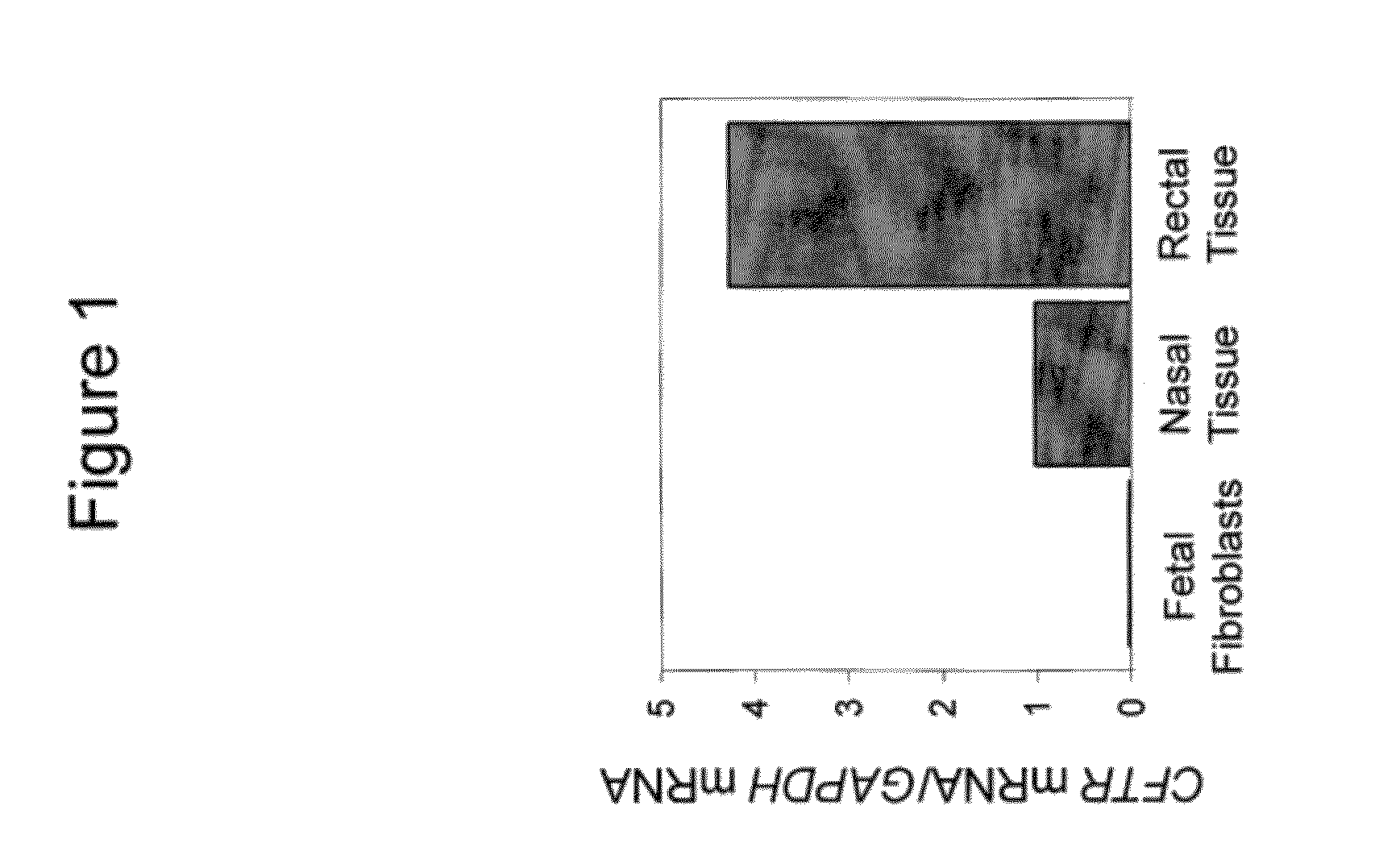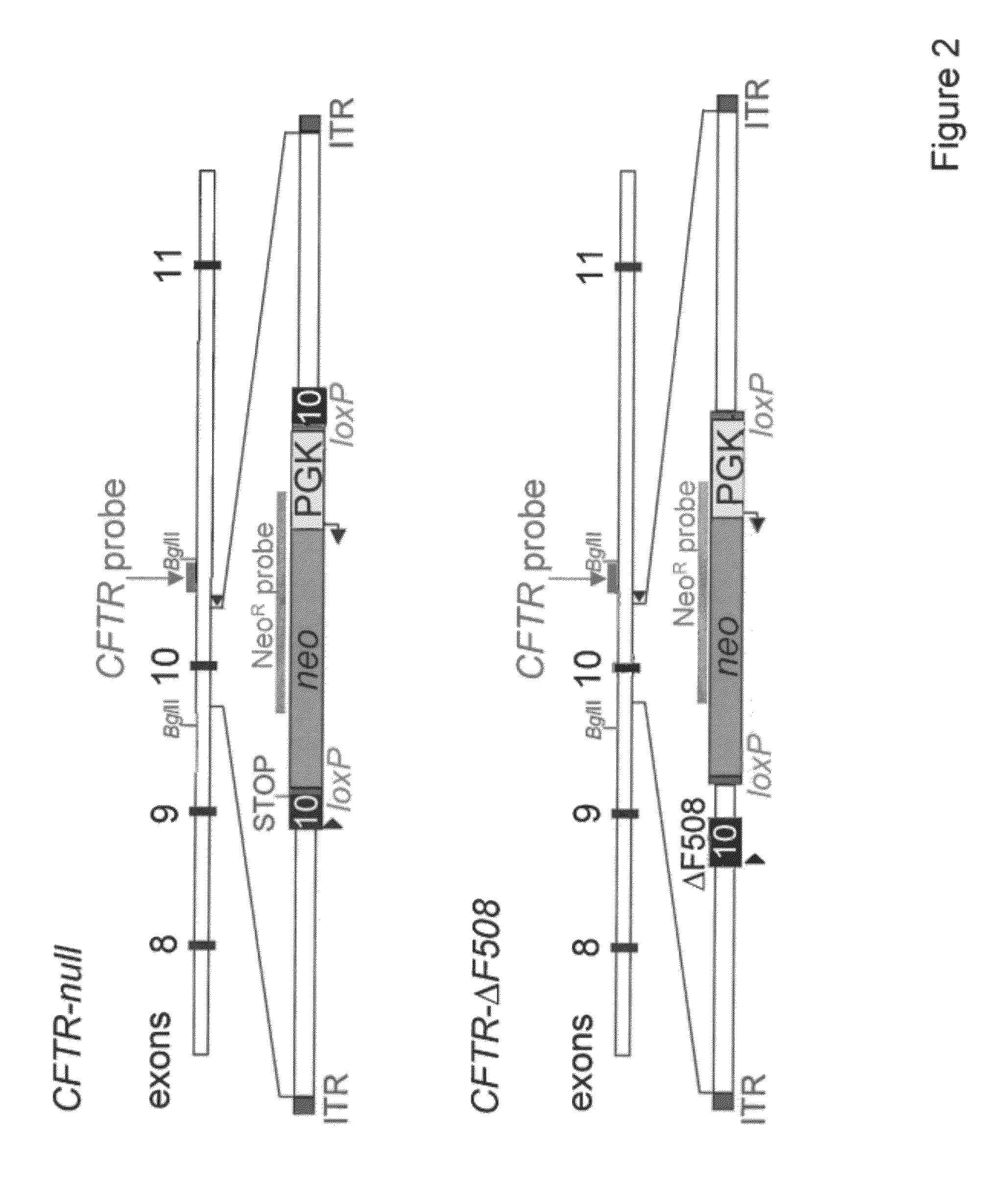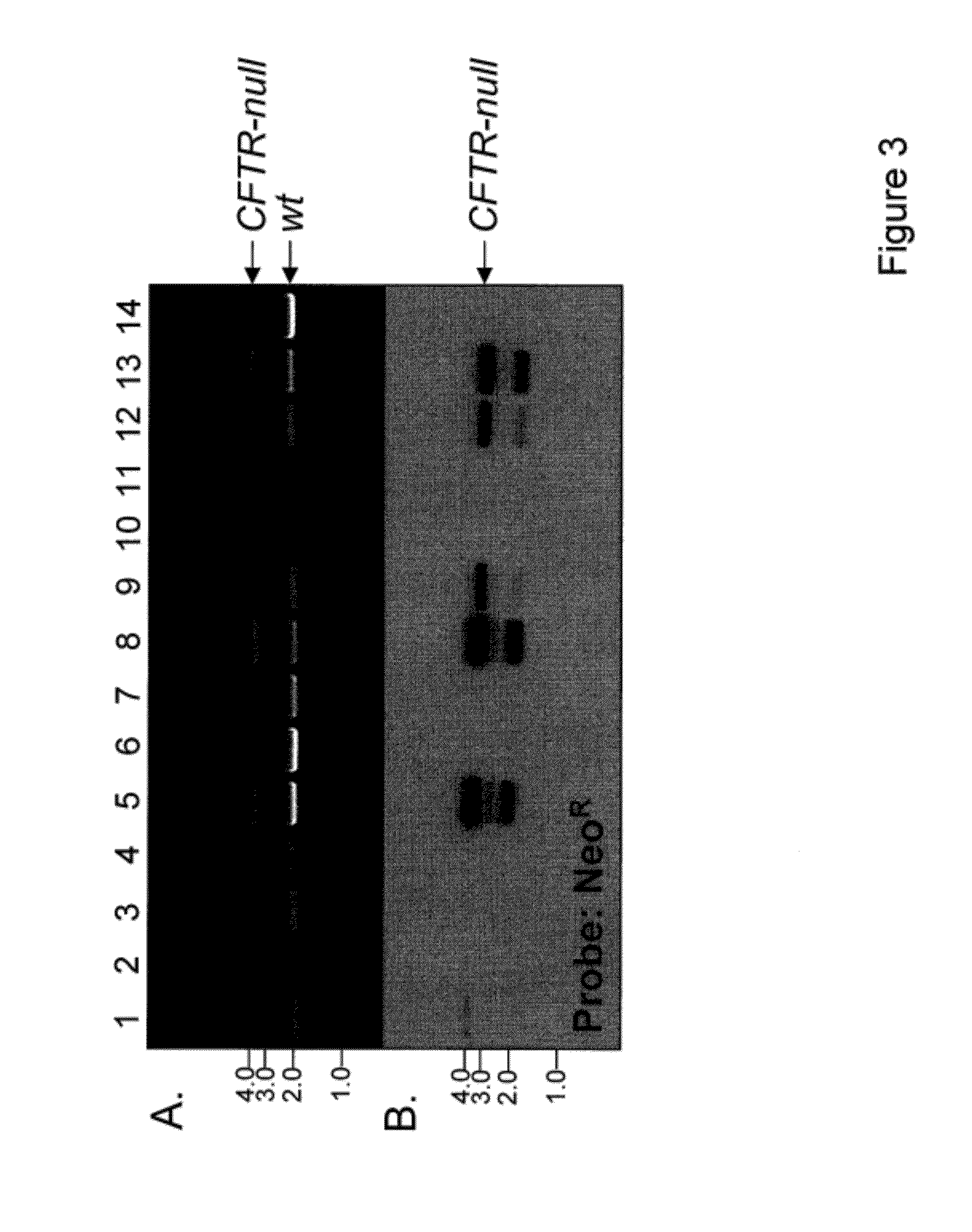Transgenic pig model of cystic fibrosis
a cystic fibrosis and pig model technology, applied in the field of transgenic, nonhuman animal models of disease, cells, etc., can solve the problems of severe, permanent lung damage, bacterial infection and inflammation, difficulty in breathing of patients, etc., and achieve good models and increased disability.
- Summary
- Abstract
- Description
- Claims
- Application Information
AI Technical Summary
Benefits of technology
Problems solved by technology
Method used
Image
Examples
experimental examples
[0104]Pigs with two different alterations in their CFTR gene, a null allele and the ΔF508 mutation will provide useful animal models for the study of CF. A null allele would lack any CFTR function and should therefore provide a valuable model for assessing the porcine CF phenotype, for comparing the consequences of other CF-associated mutations, for exploring pathogenesis, and for evaluating many therapeutic strategies. The ΔF508 mutation deletes Phe508 and is the most common CF-associated mutation, accounting for ˜70% of CF alleles (Zielenski et al., Annu. Rev. Genet. 29:777-807, 1995). In humans, this mutation disrupts processing of the protein, so that nearly all CFTR-ΔF508 is retained in the endoplasmic reticulum (ER) and degraded, preventing maturation to the plasma membrane. In addition, this deletion reduces the activity of single CFTR channels and shortens their lifetime on the cell surface (Dalemans et al., Nature 354:526-528, 1991; Teem et al., Receptors Channels 4:63-72, ...
PUM
| Property | Measurement | Unit |
|---|---|---|
| Holding voltages | aaaaa | aaaaa |
| Holding voltages | aaaaa | aaaaa |
| Holding voltages | aaaaa | aaaaa |
Abstract
Description
Claims
Application Information
 Login to View More
Login to View More - R&D
- Intellectual Property
- Life Sciences
- Materials
- Tech Scout
- Unparalleled Data Quality
- Higher Quality Content
- 60% Fewer Hallucinations
Browse by: Latest US Patents, China's latest patents, Technical Efficacy Thesaurus, Application Domain, Technology Topic, Popular Technical Reports.
© 2025 PatSnap. All rights reserved.Legal|Privacy policy|Modern Slavery Act Transparency Statement|Sitemap|About US| Contact US: help@patsnap.com



